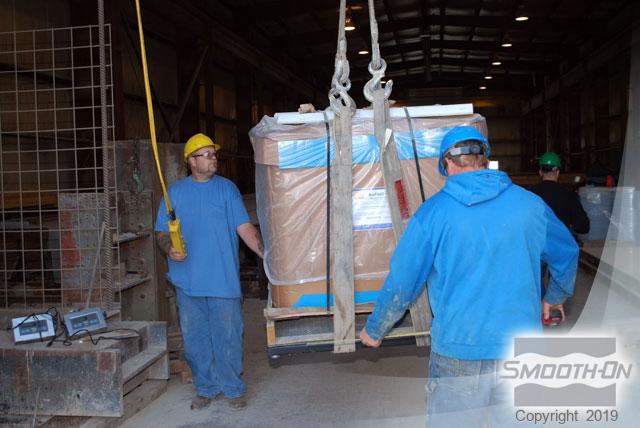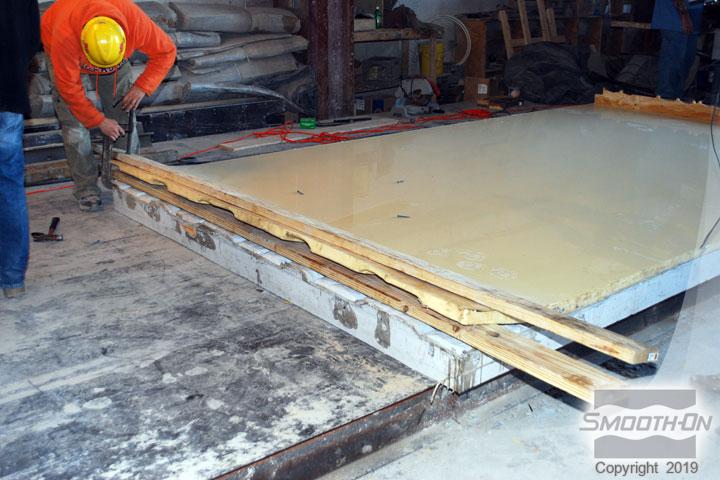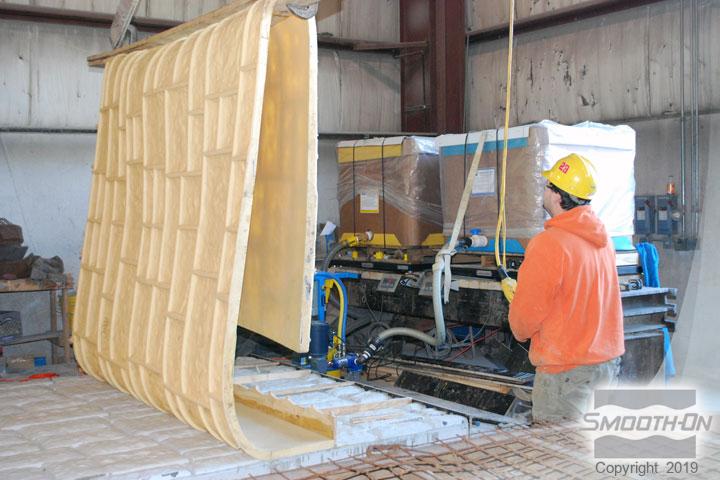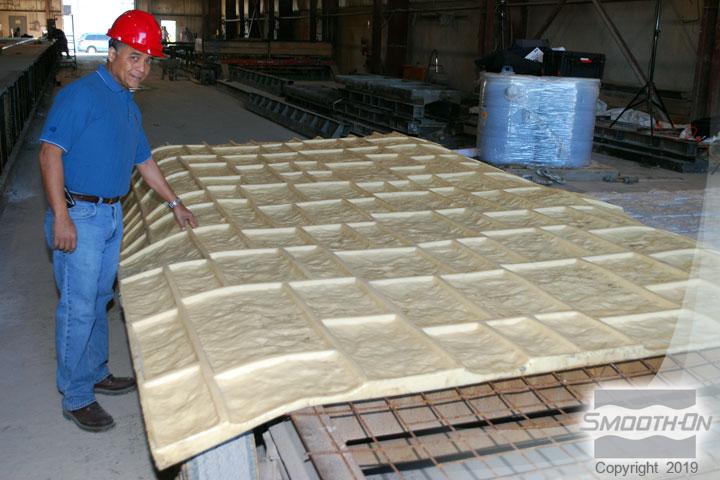How To Make a Large Scale Formliners with VytaFlex™ Mold Rubber
Overview
THE PROJECT: Few concrete pre-casters would even consider taking on a project this size. The Pennsylvania Department of Transportation needed 2,000 decorative noise reduction panels to maximize public safety and divert highway noise away from surrounding neighborhoods along the soon to be opened State Road #15 in Lancaster, PA.
Each panel measures 10’ x 18’ by 6 “ (3m x 5.5m x 15.25 cm), has moderate stone detail and undercuts and weighs 8,000 lbs./3,630 kgs. By the time the project is finished, over 16 million pounds (7.25 million kilos) of concrete will be cast.
THE PRO: J.R Slaw, Inc. of Bowmanstown, PA is uniquely qualified to take on a project this size with the manpower, equipment and know-how to deliver on time.
THE CHALLENGE: Rising to the Challenge; developing a strategy to cast 2,000 of these panels meant being keenly aware of all the variables necessary to control costs and meet the 1 year delivery deadline. A key to meeting this challenge was Slaw’s development of an innovative ‘post and panel’ system that is superior to other systems and delivers a finished product at a lower cost.
A critical decision to be made affecting the outcome was choosing the right rubber mold material to use for making the production form liners. Slaw determined that 8 formliners used to cast 8 concrete panels everyday, seven days/week would not only meet the deadline, but help them finish the job 1 month ahead of schedule.
ABS plastic that Slaw had used in the past was not an option because it would never reproduce the detail for the stone originals or hold up to the rigors of casting concrete everyday.
After considering alternatives, Smooth-On's Vytaflex™ 60 urethane mold rubber was chosen for:
- its ability to perfectly replicate the cobble stone finish from the original model
- abrasion resistance and durability
- flexibility to facilitate demold
- handle the 8,000 lb./3,630 kg. concrete load and retain its shape on a daily basis
After choosing the right mold material, Slaw was onto the next challenge; how to quickly mix and dispense the large amounts of VytaFlex™ 60 needed to make the 1,000 lb./454 kg. rubber formliners. Answer: The EZ~Mix™ Meter Mix Machine mixed and dispensed 32 lbs./14.5 kgs. of VytaFlex™ rubber per minute and each liner took under 1 hour to pour. 24 hours later, the form liners are put into service.
Concrete is cast into each liner daily. Next day, 8 cast sound panels are demolded and loaded onto tractor trailers (4 panels per trailer). They are delivered to the jobsite and taken from the trailer and immediately installed. This “Just In Time” Delivery approach is necessary to minimize cost, increase efficiency and minimize the “installation footprint”. There is no need for a storage area at the jobsite for the precast sound barriers.
Materials Used in this Tutorial
- VytaFlex 60
- EZ~Mix Machine
Step 1: Preparing Model and Materials
The original model is made from concrete with the following dimensions: Length -18' (5.5m) Height - 10' (3.0m) Depth - 6'' (15 cm). Containment walls are constructed around all sides to hold liquid rubber. A sealing agent is applied to the model and allowed to dry. Then a release agent is applied to the model and allowed to dry.
Totes units (equivalent of 5 drum units) of VytaFlex® 60 mold rubber are brought to the job site. VytaFlex® 60 mold rubber is available in drums and totes. The EZ~Mix® Meter Mix Machine is assembled. The totes are positioned on weighing scales to ensure that liquid Parts A and B are measured accurately throughout the process.
Step 2: Dispensing VytaFlex™ 60
Mold rubber is dispensed from the Ez~Mix™ Meter Machine at a rate of 32 pounds per minute. The EZ~Mix™ Meter Mix Machine greatly reduces the time and labor needed to mix and poor large amounts of mold rubber. Waste due to human error is virtually eliminated resulting in a big material savings.
The cured rubber is also stronger with higher physical properties vs. rubber mixed by hand. The VytaFlex™ 60 mold rubber has the abrasion resistance and durability to handle the 8,000 lb / 3630 kg. concrete load on a daily basis. Mold rubber is allowed to cure overnight at room temperature (72° F / 23° C).
Step 3: Demold
Workers lift one side to allow a board to be placed under and over the rubber edge. Boards are then secured by two heavy duty clamps. Straps are attached to the boards and secured to the overhead crane. The overhead crane slowly lifts the rubber from the model.
Flexibility With The VytaFlex® Rubber allows for an easy demold. A close up of the mold reveals the texture captured perfectly by the VytaFlex® rubber. When the rubber is removed halfway the boards are repositioned to the center of the mold.
Total weight of the VytaFlex® rubber mold is around 1000 pounds (454 kg). VytaFlex® mold rubber offers superior physical properties. The rubber mold is placed on a trailer and transported to production. VytaFlex® mold rubbers will last a long time in casting concrete.
Step 4: Preparing Mold For Concrete
Containing walls are positioned to hold concrete. Concrete release agent is applied to the mold liner prior to casting concrete. The rebar substructure is prepared and then the substructure is positioned over the rubber liner.
Step 5: Casting Concrete
Concrete is poured into the mold. A drop-in vibrator is used to eliminate surface voids. Vibration also promotes better concrete compaction. Vytaflex® 60 has excellent compression set which prevents the rubber from distorting when large amounts of concrete are poured against it. The concrete is then allowed to cure overnight.
Step 6: Demolding and Finishing
Containing walls are removed and an overhead crane is used to demold sound panel. Rubber mold easily separates from the casting. Panel reflects perfect detail captured from the VytaFlex® rubber. Multi-ton casting is removed from the VytaFlex® mold and placed on a waiting tractor trailer. Sound panels are transported to the job site. Eight panels are produced and installed every day.







































